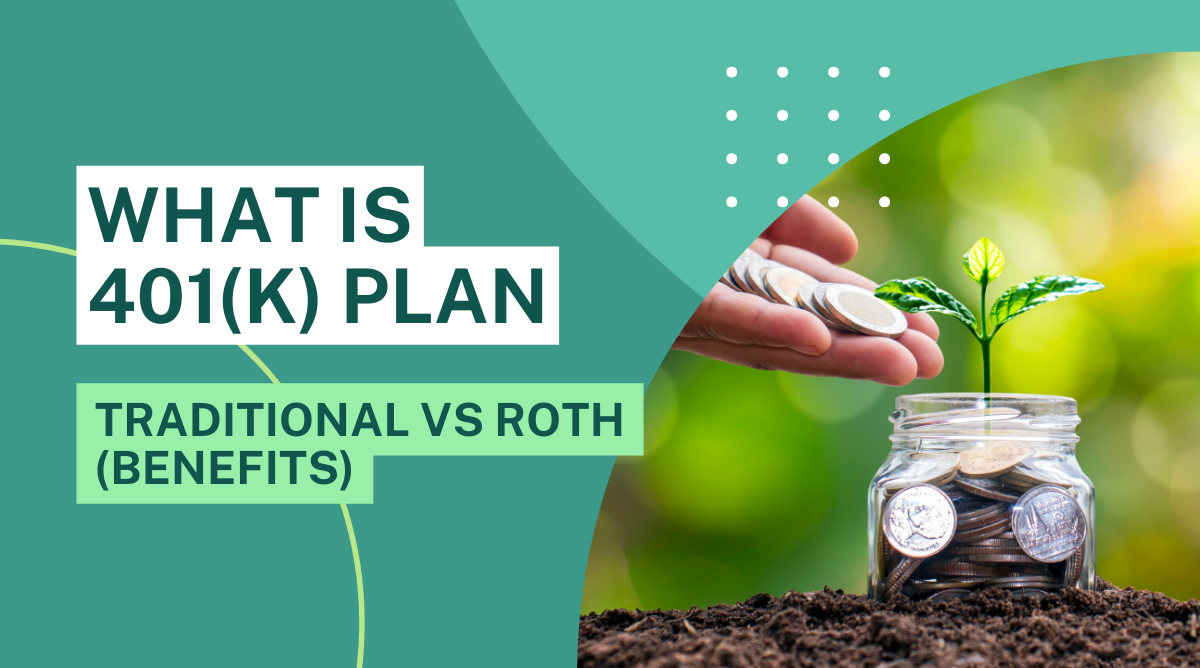A 401(k) is a type of retirement savings account that is offered by many employers in the United States. Employees can contribute a portion of their pre-tax income to the account, and in many cases, employers will match a portion of these contributions. The money in the account grows tax-free until it is withdrawn in retirement, at which point it is taxed as income.
One of the benefits of a 401(k) is that it allows individuals to save for retirement in a tax-advantaged way. By contributing pre-tax income, individuals reduce their taxable income in the current year, which can result in a lower tax bill. In addition, the money in the account grows tax-free, which can help it to accumulate faster over time.
There are some limitations to 401(k) accounts, including annual contribution limits and restrictions on when the money can be withdrawn without penalty. However, for many people, a 401(k) is an important tool for saving for retirement and building long-term wealth.
Is 401 (k) good or bad?
Whether a 401(k) is good or bad depends on various factors such as an individual’s financial situation, investment goals, and employer’s plan offering.
Generally speaking, a 401(k) can be an excellent way to save for retirement because it allows individuals to contribute pre-tax income to the account, which can reduce their taxable income in the current year, and the money in the account grows tax-free until it is withdrawn in retirement. Moreover, many employers offer matching contributions, which can significantly boost the individual’s savings.
However, there are also some drawbacks to 401(k) plans. For example, there may be limitations on investment options, and early withdrawals may be subject to taxes and penalties. Moreover, some 401(k) plans may have high fees that can eat into an individual’s returns over time.
Overall, a 401(k) can be a powerful tool for retirement savings, but it’s important to weigh the pros and cons and consider one’s individual circumstances before making a decision. It may also be beneficial to seek the advice of a financial advisor to determine if a 401(k) is the right choice for your retirement planning.
401(K) plan Types:
- Traditional 401(k): This is the most common type of 401(k) plan, in which employees can contribute pre-tax income to the account, reducing their taxable income in the current year.
- Roth 401(k): This type of 401(k) allows employees to contribute after-tax income to the account, but withdrawals in retirement are tax-free.
- Safe Harbor 401(k): This plan is designed to make it easier for employers to pass annual compliance testing. Employers must make either a matching contribution or a non-elective contribution to all eligible employees.
- Solo 401(k): This is a 401(k) plan designed for self-employed individuals or small business owners with no employees, allowing them to save for retirement while also benefiting from tax advantages.
- Simple 401(k): This plan is designed for small businesses with 100 or fewer employees, and it requires employers to make either a matching contribution or a non-elective contribution to all eligible employees.
- Automatic Enrollment 401(k): This plan automatically enrolls employees in the 401(k) plan unless they opt-out, making it easier for employees to save for retirement.
401 k retirement bill
One recent bill that has gained attention is the SECURE Act (Setting Every Community Up for Retirement Enhancement Act), which was signed into law in December 2019. The SECURE Act includes several provisions aimed at improving retirement savings, including:
- Allowing long-term, part-time workers to participate in 401(k) plans.
- Raising the age for required minimum distributions (RMDs) from 70.5 to 72 years old.
- Allowing penalty-free withdrawals from retirement accounts for the birth or adoption of a child.
- Requiring most inherited retirement accounts to be distributed within 10 years, instead of over the beneficiary’s lifetime.
- Providing tax credits for small businesses that offer retirement plans to their employees.
Overall, the SECURE Act is aimed at expanding access to retirement savings options and increasing the flexibility of retirement accounts.
Conclusion
If the employee comes under lower tax bracket, they might choose the traditional 401(K) which gives immediate tax break
If the employee comes under higher tax bracket, they might choose the Roth 401(k) which gives you advantage to avoid taxes on the savings later. No tax on withdrawals.
401 (k) plan is a retirement plan which gives you option to contribute up to certain limit and invest that money which benefits you after your working days gets over.
If you want to check how do you invest to secure your retirement you can calculate via retirement calculator.
